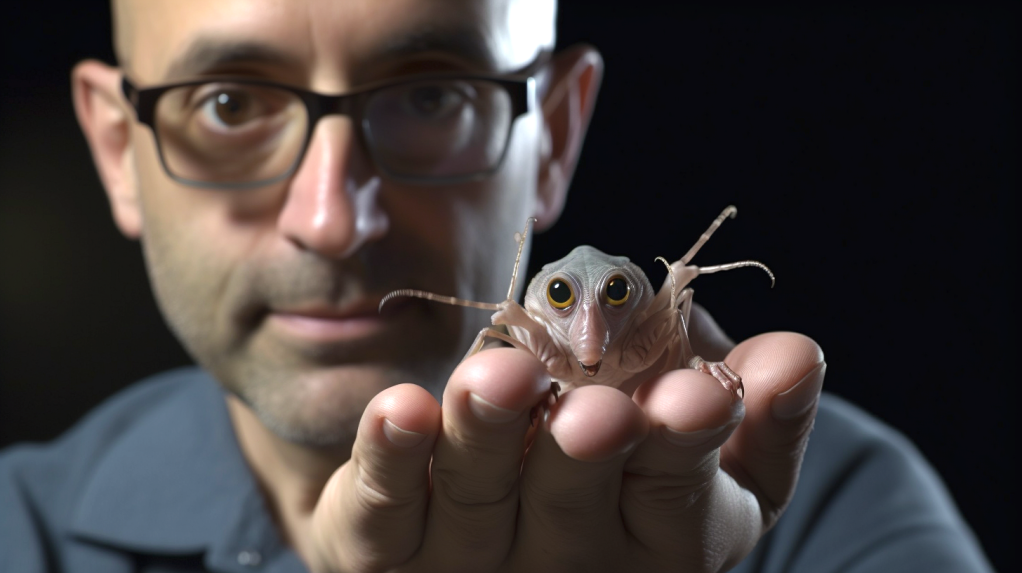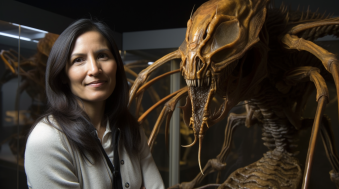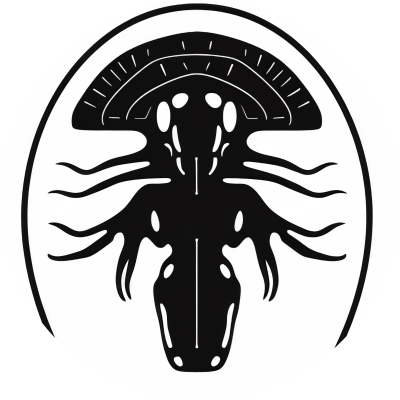One of the most exciting aspects of xenobiology is discovering new species that have never been seen before. These creatures can range from tiny single-celled organisms to massive, towering beasts, each with their own unique features and abilities. However, while the discovery of a new species can be exhilarating, naming and classifying it can be an entirely different challenge.
THE LIMITS OF EARTHLY TAXONOMY
On Earth, species classification is based on taxonomy, a system of naming and categorizing living organisms. Taxonomy has been developed over centuries of study, and it works well for the diverse range of life forms found on our planet. However, when it comes to identifying and naming new alien species, this system can be limiting.
The first step in identifying a new species is to determine whether it fits within an existing Earth-based category, such as mammals, birds, fish, or insects. However, many of the species found on other planets don’t fit neatly into these categories, making classification difficult. For example, an alien species may have features of both a reptile and a mammal, making it unclear which category it should belong to. In these cases, xenobiologists must work to create new categories, orders, and families to accurately classify these new species. This process can take years or even decades, as researchers must carefully analyze the morphology, behavior, and genetics of the species to determine its evolutionary history and relationships to other organisms.
THE DIFFICULTY OF ESTABLISHING PHYLOGENETIC RELATIONSHIPS
Another challenge in identifying and naming new alien species is establishing their phylogenetic relationships. Phylogeny is the study of evolutionary relationships among organisms. It is based on genetic, morphological, and behavioral characteristics, and helps to establish the evolutionary history of a species. However, because alien life forms may have evolved in vastly different ways than life on Earth, establishing their phylogenetic relationships can be extremely difficult.
THE ISSUE WITH NAMING CONVENTIONS AND PROTOCOL
Once a new alien species has been identified and its phylogenetic relationships have been established, the next step is to name it. Another challenge in naming and classifying new alien species is the lack of a standardized naming system. On Earth, species are typically named using the binomial nomenclature system, which includes a unique genus and species name. However, with the discovery of new alien species, the traditional binomial system may not always be suitable. Some species may require additional levels of classification, while others may need entirely new naming systems.

THE CHALLENGE OF UNDERSTANDING ALIEN ANATOMY
One of the biggest challenges in identifying and naming new alien species is understanding their anatomy. Alien life forms may have entirely different body structures and organs, which makes it difficult to know where to start in terms of classification. Xenobiologists must spend considerable time studying the anatomy of new species in order to identify them.
THE PROBLEM OF REACHING LIVE SPECIES
To complicate matters further, many new species are found in remote or hard-to-reach locations, making it difficult to study them in their natural habitat. In these cases, researchers must rely on limited samples or observations, which can make it difficult to accurately classify and name the species.
THE TIME-CONSUMING NATURE OF THE PROCESS
All of the above factors contribute to the time-consuming nature of identifying and naming new alien species. It can take years of study to understand the anatomy, phylogeny, and behavior of a new species. In addition, the naming process itself can take time as well, as scientists must follow strict protocols to ensure that the name is appropriate and unique.
CONCLUSION
All of these challenges can make naming and classifying new alien species a difficult and time-consuming process. As a result, many newly discovered species remain unnamed and unclassified for years or even decades, until researchers can accurately determine their place within the xenobiological classification system.
Despite these challenges, the discovery of new species remains an important part of xenobiology research. With advances in technology and scientific understanding, researchers are better equipped than ever to study and classify new species, paving the way for future discoveries and a deeper understanding of the universe’s biodiversity.
FEW WORDS FROM THE XENOBIOLOGY MUSEUM’S TEAM

Identifying and classifying non-humanoid alien species is an incredibly complex and time-consuming process. We cannot rely on Earth-based taxonomic categories to categorize extraterrestrial life forms. We have to be willing to question our assumptions and create new methods to describe and categorize the diversity of life in the universe.
– Dr. Tanya Singh, Founder of the Xenobiology Museum

The challenge of naming new alien species is not just a matter of taxonomy, it’s also about understanding the unique ecological relationships that these species have in their ecosystems. We must take into account their role in the food chain, their behavior, and their adaptation to their environment. It’s a daunting task, but one that we must take on if we hope to gain a better understanding of the universe around us.
– Dr. Mei Ling, Lead Xenobiologist and Curator

Naming a new alien species is an immense responsibility. It’s not just a matter of creating a catchy or memorable name. We have to consider the cultural and ethical implications of giving a name to a species that is not from our planet. We have to be mindful of the fact that we are not the only intelligent beings in the universe, and we must respect the diversity of life that exists beyond our world.
– Dr. Maria Rodriguez, Director of Research
Idea: Marie-Sophie Germain
Text: ChatGPT4 (prompt by Marie-Sophie Germain)
Photos: MidJourney (prompts by Marie-Sophie Germain)
